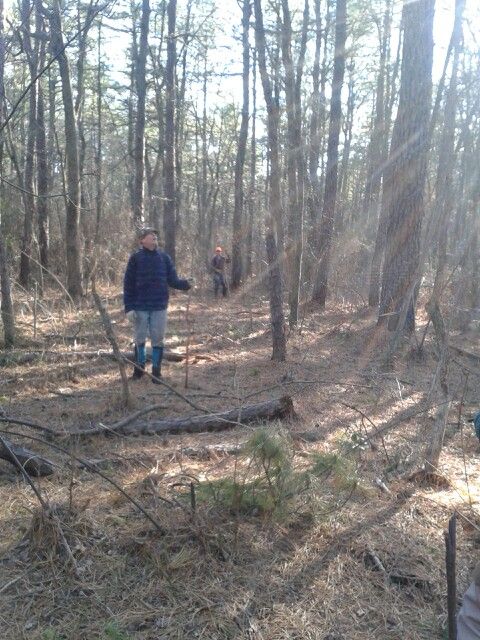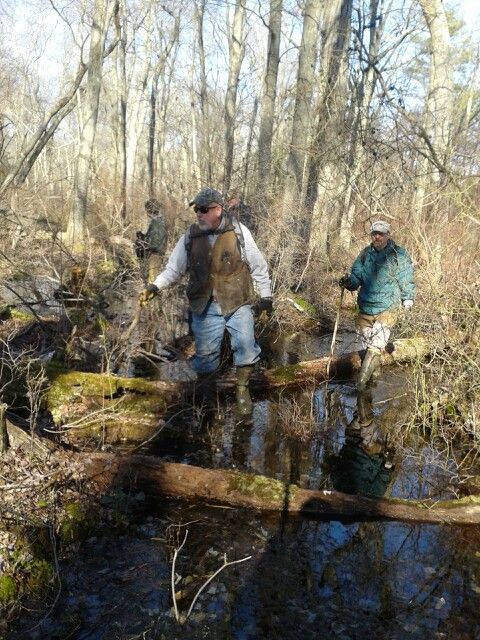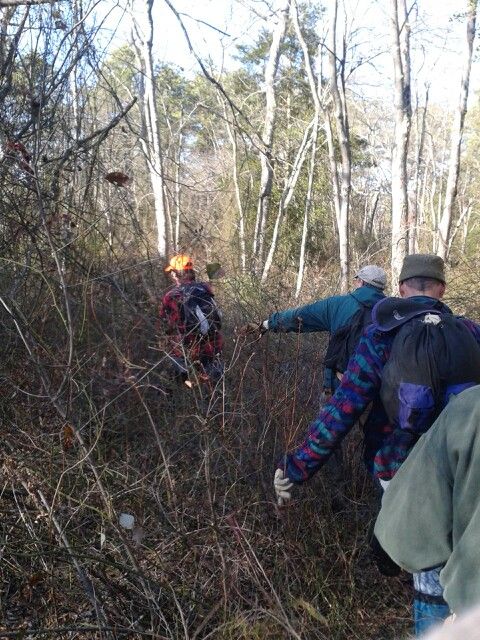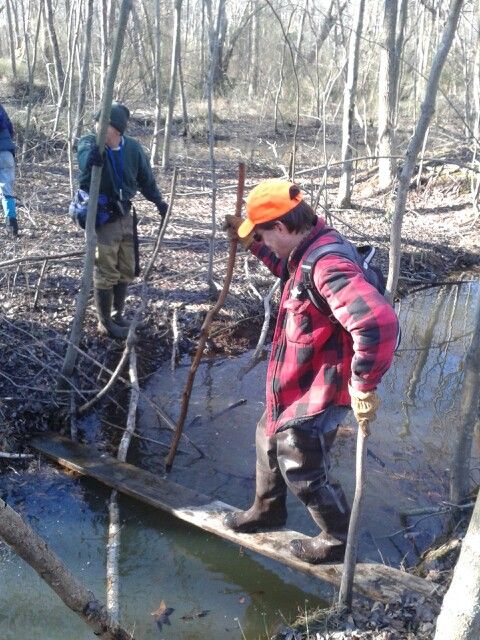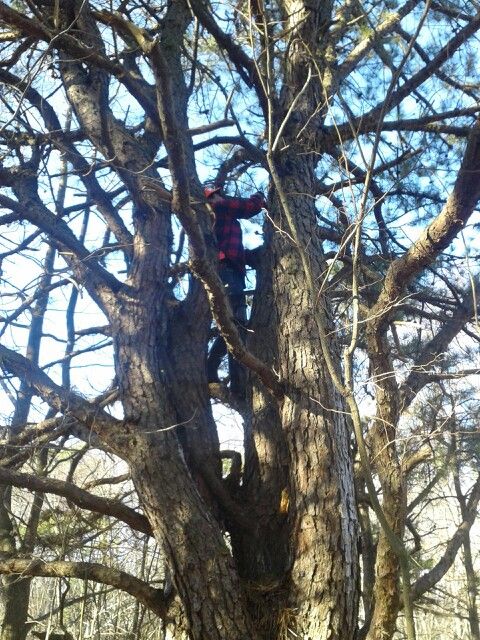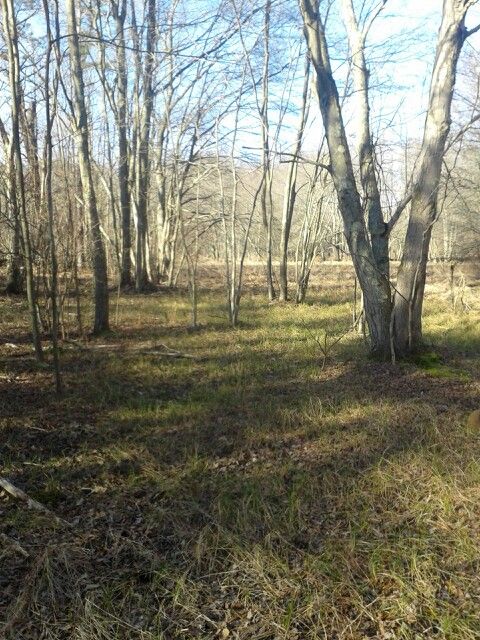All,
Sometimes the members of PBX come up with idea's for hikes, and this one was designed by woodjin. Here is the edited text of todays outing which he aready discussed with us a few weeks back.
I mentioned this on the last PBX trip this past weekend .... the Retreat preserve owned by the Nj natural lands trust. What has drawn me to it is the fact that it is tucked away almost completely surrounded by private land. I am curious if it is hidden, pristine woods. Or has it been breached by the locals nearby. I am aiming to explore it next Sunday morning, the 23rd. It will be between two and three tough miles.
Jeff
So this morning at 9AM we met along New Road and proceeded to the start of our hike at the far northern tip of the preserve. The preserve borders Leisuretown, New Road, Ridge Road, Retreat Road, and Route 70.
More on this lake later.

We traveled the west side of Friendship Creek and there were numerous canals which we had to cross.

Unfortunately, our objective was to cross over Friendship Creek from the east to the west side and we were unable to do this. We were forced to travel much further than we wanted to and ended up in the heart of Leisuretown crossing the main bridge.

For a few second there it appears we were going to be confronted by a man in a pickup truck who quickly stopped on the bridge as we were about to cross. For some reason he continued on without speaking with us. After crossing the bridge we had to walk right through the back yards of a few homes while the owners were out raking leaves in the yard. We walked right by one older woman who never even knew we were there. I saw the man in the house next door looking out the window at us though. Apparently, nobody seemed concerned about 6 oddly dressed men passing through.
A few sections were full of brier and quite wet while others were just downright nice.


Most people don't know that this area has quite a bit of history to it. I was one of them. During our research of the area Bob noticed that the Retreat Cotton Factory was located in the area back in the early 1800s. He found the map showing it.

Unfortunately, all remains of this huge factory and the homes that went with it are gone. In the early 1900's Wells & Crowshaw purchased the property for cranberry operations and built a hugh concrete dam that is still there and intact. It is extremely hard to get to and very few people even know it is there.






Our tracks

Read more about the factory which Bob found online.
http://articles.philly.com/1997-02-23/news/25536592_1_excavation-senior-citizens-industry
Jeff really came up with a good hike for us today. I was extremely impressed with the area and gave our hike today a 9.0. I would have gone higher but traveling around Leisuretown was not my idea of fun. I hate going near homes but we were committed once we could not cross the creek.
I want to thank Lost Town Hunter for passing along some of the information about the place after I contacted him tonight.
Guy
Sometimes the members of PBX come up with idea's for hikes, and this one was designed by woodjin. Here is the edited text of todays outing which he aready discussed with us a few weeks back.
I mentioned this on the last PBX trip this past weekend .... the Retreat preserve owned by the Nj natural lands trust. What has drawn me to it is the fact that it is tucked away almost completely surrounded by private land. I am curious if it is hidden, pristine woods. Or has it been breached by the locals nearby. I am aiming to explore it next Sunday morning, the 23rd. It will be between two and three tough miles.
Jeff
So this morning at 9AM we met along New Road and proceeded to the start of our hike at the far northern tip of the preserve. The preserve borders Leisuretown, New Road, Ridge Road, Retreat Road, and Route 70.
More on this lake later.
We traveled the west side of Friendship Creek and there were numerous canals which we had to cross.
Unfortunately, our objective was to cross over Friendship Creek from the east to the west side and we were unable to do this. We were forced to travel much further than we wanted to and ended up in the heart of Leisuretown crossing the main bridge.
For a few second there it appears we were going to be confronted by a man in a pickup truck who quickly stopped on the bridge as we were about to cross. For some reason he continued on without speaking with us. After crossing the bridge we had to walk right through the back yards of a few homes while the owners were out raking leaves in the yard. We walked right by one older woman who never even knew we were there. I saw the man in the house next door looking out the window at us though. Apparently, nobody seemed concerned about 6 oddly dressed men passing through.
A few sections were full of brier and quite wet while others were just downright nice.
Most people don't know that this area has quite a bit of history to it. I was one of them. During our research of the area Bob noticed that the Retreat Cotton Factory was located in the area back in the early 1800s. He found the map showing it.

Unfortunately, all remains of this huge factory and the homes that went with it are gone. In the early 1900's Wells & Crowshaw purchased the property for cranberry operations and built a hugh concrete dam that is still there and intact. It is extremely hard to get to and very few people even know it is there.
Our tracks

Read more about the factory which Bob found online.
http://articles.philly.com/1997-02-23/news/25536592_1_excavation-senior-citizens-industry
Jeff really came up with a good hike for us today. I was extremely impressed with the area and gave our hike today a 9.0. I would have gone higher but traveling around Leisuretown was not my idea of fun. I hate going near homes but we were committed once we could not cross the creek.
I want to thank Lost Town Hunter for passing along some of the information about the place after I contacted him tonight.
Guy



 )
)



